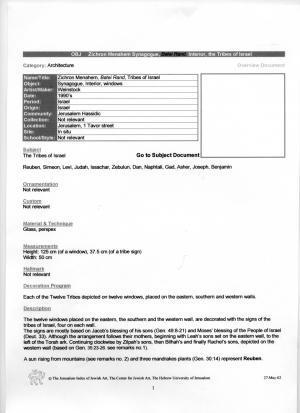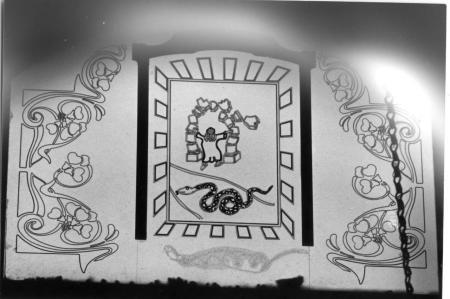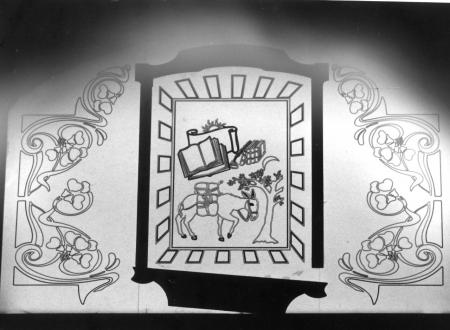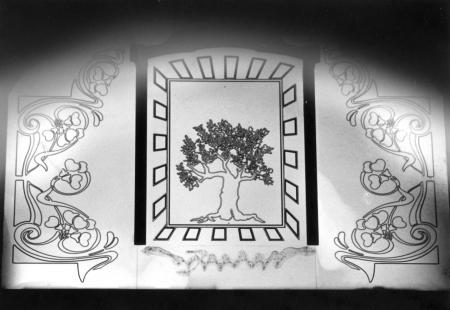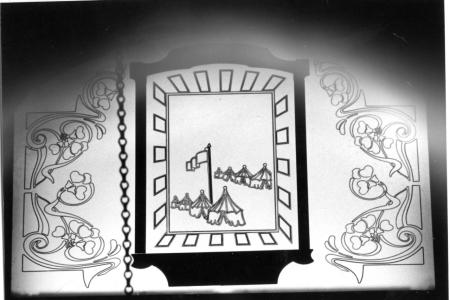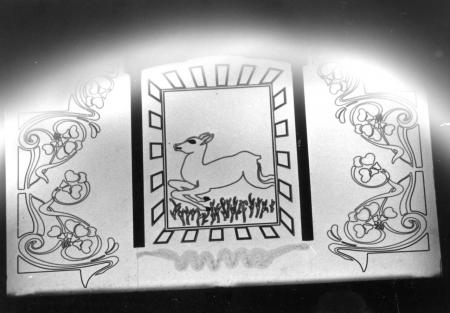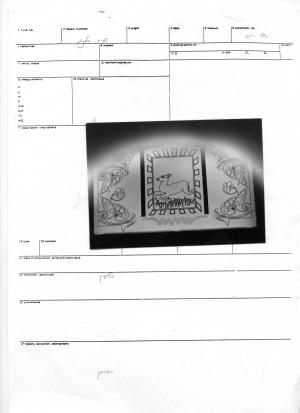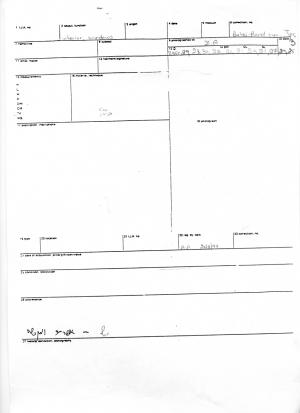Obj. ID: 14502
Jewish Architecture Batei Rand: Zikhron Menahem Synagogue in Jerusalem - Windows
To the main object: Zikhron Menahem Synagogue in Jerusalem - Interior

The twelve windows placed on the eastern, southern and western walls, are decorated with the signs of the Tribes of Israel, four on each wall.
The signs are mostly based on Jacob’s blessing of his sons (Gen. 49:8-21) and Moses’ blessing of the People of Israel (Deut. 33). However, some are interlaced with midrashic interpretations, such as Issachar and Dan.
The arrangement follows their mothers, beginning with Leah’s sons set on the eastern wall, to the left of the Torah ark, continuing clockwise with Zilpah’s sons, then Bilhah’s and finally Rachel’s sons, depicted on the western wall (see: Remarks: no.1).
A sun rising from mountains (See: Remarks: no. 2) and three mandrake plants (Gen. 30:14; fig. 1) represent Reuben.
The sign of Simeon is the town ofShechem, depicted as a fortress wall containing a gate and a tower (Gen. 34:25 - 29, 49:6-7; fig. 2; See: Remarks, no. 3).
Levi is represented by Sanctuary Implements because of his functionary role in the Temple. An open Torah scroll with a hand pointing towards it is depicted above a breastplate (hoshen). A burning incense and a burning altar is set on the lower right corner (Deut. 33:8-11; fig 3; See: Remarks: no. 4). Judah is a rampant lion holding a banner (Gen. 49:9; fig. 4; See: Remarks: no. 5).
Four additional Tribes are depicted on the southern wall beginning with Issachar, represented in an elaborate sign based on biblical and midrashic sources. A saddled donkey carrying packages (Gen. 49:14; fig. 5) accompanied by books, a scroll and a feather with ink, symbolizing his position as a scholar among the other Tribes (Chron. I 12:33). The sign also depicts the sun and the moon, illustrating his ability to observe the Celestial bodies (Gen. Rabbah 72:18, 99:10). The last of Leah’s sons - Zebulun is depicted as a ship with a mast on the water (Gen. 49:13; fig. 6).
The tribe of Dan, the eldest son of Bilhah is a snake wriggling on a pathway (Gen. 49:17; fig.7). It is combined with a depiction of a famous member of the tribe of Dan (Judg. 16:29-30), Samson, who is seen pushing away two pillars supporting an arch made of stone bricks. Naphtali, depicted as a running hind (Gen. 49:21; fig. 8), closes the representations on the southern wall.
The western wall contains the four remaining Tribes, beginning with Gad, the eldest of Zilpah’s sons, depicted as a tent camp composed of two rows of four tents adorned with a banner (Gen. 49:19; fig 9). Asher is depicted as an olive tree (Gen. 49:20; Deut.33: 12; fig. 10).
Rachel’s sons close the cycle. Joseph’s sign combines those of his two sons: Ephraim and Manasseh depicted as a bull raising its head and a reindeer’s head (Deut.33: 17; fig.11). The sign of Benjamin combines a running wolf (Gen. 49:27) and theTemplesite, which resided in this Tribe’s territory (Deut. 33:12; fig.12).
Each depiction is inscribed with the Tribe’s name and framed by a window-like perspective frame, flanked on each side by foliate scrolls containing flowers.
1. The arrangement of the Tribes according to their mothers is generally based on Gen. 35:23-26 although Rachel’s sons appear before the sons of Bilhah and Zilpah.
2. The sign of Reuben as a rising sun could be derived from Jacob’s blessing “thou art my firstborn, my might and the beginning of my strength, the excellency of dignity, and the excellency of power” (Gen. 49:3).
3. The fortress town Shekhem depicted in the sign of Simeon is probably modeled after the image of David’s Tower inJerusalemcombined with Rachel’s tomb.
4. The Templeactivities pictured are actually a combination of the Levites' role and that of the priests (cohanim), a family belonging to the Tribe of Levi.
5. Picture is missing.
sub-set tree:
Width: 50 cm
Each of the Twelve Tribes is depicted on twelve windows, placed on the eastern, southern and western walls of the synagogue.



